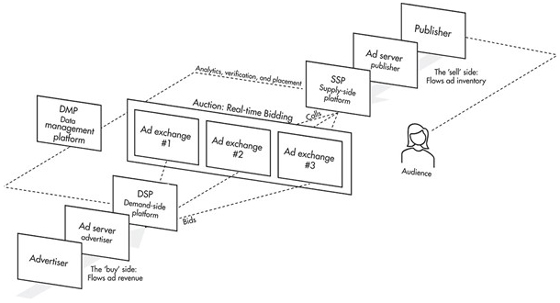
How Digital Advertising Fuels Fake News—and Why Digital Marketing Professionals Seem Not to Notice
For almost a decade, major newspapers like The New York Times and The Wall Street Journal have documented how advertising budgets often unintentionally fuel the proliferation of disinformation and fake news. It appears that “good” brands frequently advertise on “bad” websites, including fake news, and sponsor toxic influencers online. But why does this happen, and why do marketers and advertisers seem indifferent to the negative impacts of their ad spending?
My research paper, published in the Journal of Marketing Management, explores how digital ad spending can bankroll harmful content and examines why digital marketers appear to disconnect themselves from the undesirable consequences of digital advertising practices. Part of the reason is that while advertisers used to control precisely where their ads were served, nowadays, digital advertisers outsource the responsibility of serving ads to an automated market called programmatic advertising, where ad trading occurs without human participation.
The systematic analysis of the entry guides for programmatic advertising reveals the imaginaries that help digital marketers distance themselves from the negative externalities their practices perform. Below, I unpack the three main imaginaries: (1) ideological beliefs about how advertising makes the Internet “free,” (2) the dislocation of advertisers from where their ads are placed, and (3) a limited view of how digital ads impact society.
1. The “Free” Internet Ideology
While the “free” Internet ideology paints advertisers as supporters of freedom, it overlooks a darker reality: Internet services are not free; their business model often involves a form of surveillance capitalism that captures rents from every click a user makes. The problem is that arguing that “the end justifies the means” is an ethical trap. Even if advertisers are unaware of it, as they rely on automated systems, they are responsible for their ad spending and the voices they fund.
2. The Dislocation of Advertisers From Their Ads
The second narrative weaponizes the technical sophistication of the AdTech system by arguing that it is simply too complex to understand. The opaque structure of the advertising technologies ecosystem (AdTech) creates a distance between advertisers and their ads. Programmatic advertising refers to the automated buying and placement of ads through digital platforms, using data to target specific audiences at scale. As the figure below shows, the AdTech ecosystem involves multiple layers and algorithms for serving ads rather than direct, intentional decisions by brand managers.

Figure: An overview of programmatic advertising by Diaz Ruiz (2024)
This “dislocation” effect means that brands are rarely in direct control of where their ads appear. Rather than buying space on individual websites, brands work through ad platforms and intermediaries that automatically place ads based on data-driven criteria. The result is that ads can end up funding harmful content, including climate change misinformation. This disconnect allows brand managers to turn a blind eye to the impacts of their advertising spend, assuming that the AdTech firms are effectively managing ad placements
3. Ignoring that Society is a Stakeholder in Online Advertising
The third narrative is the tendency to narrowly focus on marketers’ needs while overlooking the broader societal impacts of digital advertising. For advertising guides, the main “stakeholders” in online advertising are the marketers. Society, however, is rarely considered a direct stakeholder in the advertising process.
This narrow focus fails to account for how advertising funds voices and content, from newspapers to influencers, shaping which voices thrive online. For example, some unethical websites and influencers use clickbait, rage bait, and fake news to lure in ad revenue. Every ad on these sites helps sustain social media echo chambers. By failing to recognize society as a stakeholder, digital marketers and advertisers miss an essential dimension of their work: its potential impact on public discourse.
A Call for Marketers to Reclaim Control
So, what’s the solution? Digital marketers and advertisers must reassert control over their advertising budgets and establish oversight over the AdTech intermediaries. To do so, they must demand full transparency from the AdTech industry. Rather than entrusting AdTech platforms to manage ad placements, brand managers must be held accountable for their ad spending.
The path forward requires increased accountability and oversight over AdTech and programmatic advertising. While digital advertising has brought unprecedented reach and efficiency, it has also led to unintended negative consequences that brands can no longer ignore. Rethinking digital advertising practices is essential to creating a trustworthy and socially responsible Internet.
This text is republished under a Creative Commons license, from the Journal of Marketing Management blog
Carlos Diaz Ruiz
Ph.D., is a business academic specializing in marketing strategy, consumer insights, and disinformation research. Dr. Diaz Ruiz is an Assistant Professor (tenure track) at Hanken School of Economics in Finland. He is the author of the forthcoming book Market-Oriented Disinformation Research.

